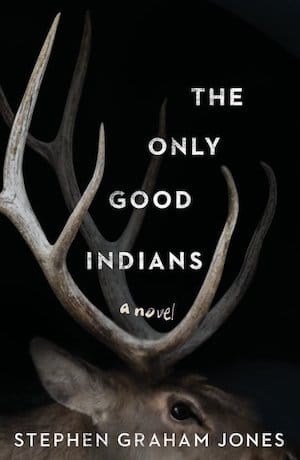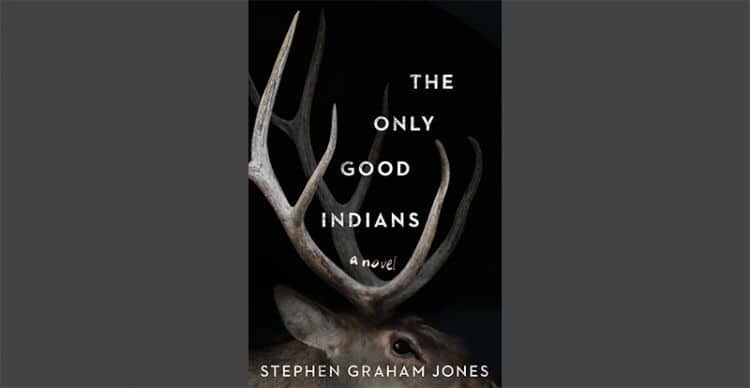All actions have consequences. No matter how big or small, everything we do has the ability to help and hurt in turn. When four friends living on the reservation go hunting where they shouldn’t and end up killing a female deer and her unborn baby, they start a chain of events that will lead to their deaths and the deaths of their loved ones.

It’s strange to say, but I didn’t even realize this was a slasher novel until I really thought about the story. A group of young men trespass and commit a terrible, moral crime and are chased due by a supernatural force intent of murdering them all for their sins. Jones manages to take what is a worn-out old formula and imbues it with dark twists and an original take. And it’s just as gruesome as a slasher as well, only over when the original misdeed is made right. So if you’re into that kind of bloody, twisting story, you’ll devour this book as I did.
He also manages to capture the feeling of otherness, especially in the character of Lewis. He understands that even though he is a Blackfeet, he doesn’t feel as connected to his heritage as perhaps he should. He lives off the rez, he works for the government (as a postal worker), he doesn’t maintain most of the traditions, and he married a White woman. The spirit haunting them seems to drive into this feeling of otherness like he doesn’t fit in and the guilt over not being “Indian enough.” Jones is also Native American and deals with themes of alienation and cultural heritage a lot in his works, but it’s at the heart of this story. Lewis is the character we spend the most time with, so his descent into madness is the most compelling and really drives the novel for me.
The big themes of the book are on cultural heritage and what that looks like today, personal responsibility and living with one’s actions, and what we owe others. A lot of what really got me about the book was not just how the four men are taken out by the vengeful spirit, but everyone else that gets dragged into it. Believe me when I say no one is safe from the wrath of this spirit. It really highlights how we are all connected, for good and for ill, and how bad choices can taint people who are wholly innocent. That why I think it’s so powerful that in the end, it’s not the four men who take down the spirit, but rather the next generation.
I will say I wish we had gotten to spend more time with Denorah, Gabe’s daughter, who ends up playing a big part in the finale. We do see her playing ball and her relationship with her dad a bit before the shit really hits the fan, but as one of the few American Indian women in the story (besides Lewis’ coworker who meets a not-so-happy end), we don’t get to see much of the world from her perspective. And it’s not that Jones can’t, or won’t, write women — he’s got a great voice for characters. Still, what little we do get to know of her makes her a stand-out player.
The dark undercurrent of the book only serve to highlight just how well Jones can get in a reader’s head. You constantly wonder where the next attack will come from, what innocuous detail or background character will turn out to be more than they appear. You get snippets from the perspective of the vengeful spirit, which only serve to heighten the tension and provide insight into the rage behind the spirit. The whole book is unsettling and nerve-wracking. I definitely don’t recommend reading it late at night (even though I totally did).
The only downside and this is for readers like me, is that Jones’ descriptions can be kind of hard to follow. I’m a fast reader, and I have a tendency to skip over sentences when a scene gets really tense. That’s hard to do with this dense style of writing, with the kinds of winding and twisting sentences that serve to heighten the tension so well. Then I miss something, and I have to back and try and suss out what I missed. Jones works a lot in metaphor and descriptive language that can take a minute to process, so make sure you really take your time with it. Or, if you’re a better listener than a reader, try the audiobook read by Shaun Taylor-Corbett.
The Only Good Indians will be available at all major book retailers on July 14, 2020.
The Only Good Indians was provided to us by Gallery/Saga Press. For more information on how we review books and other media/technology, please review our Review Guideline/Scoring Policy.
Summary
The Only Good Indians may be Stephen Graham Jones’ best work yet. A legend of the horror genre, this slasher brings forth themes of cultural expectations, personal responsibility, and what ties us together (or tears us apart). Fast readers might find Jones’ intricate use of language tough to blaze through, but it’s a story worth taking your time with and will get under your skin in no time.


